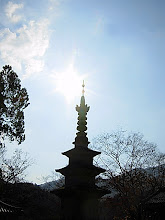This is part 2 of a 4 part series on how tea got to Korea. Part 1 was posted about a month ago see this link to catch up on this controversial debate on tea in Korea. The following is perhaps the most accepted version of how tea first came to Korea.
Like the legend told in Part 1, this legend also revolves around the birth of a kingdom, the Gaya Confederacy, that once occupied a small area of land around the Southern most tip of Korea. This area that was once ruled by the Gaya Confederacy is now fertile ground for the tea plant. I wonder if it had grown wild among the peaceful southern mountains as it does today when the Gaya Confederacy was first formed or did the Gaya bring it to those mountains?
In 42 A.D. in a rare moment of divine influence, six eggs descended from heaven housed in a golden box. The box contained a message that those born of these eggs would be kings. The prophetic message was realized and from the eggs hatched six boys. These boys matured into men in twelve days and each went to neighboring lands to rule over their Gaya Kingdoms.
The ruler of the Geumgwan Gaya Kingdom, King Suro, was the head of the Gaya Confederacy which was composed of five other smaller kingdoms. Although he wielded the most power, he still could not find a fit Queen. He prayed to the god of the mountains that he would find such a worthy woman. In the far off Kingdom of Ayodhya (in current day India) his prayers were herd.
King Suro appeared in a vivid dream to Heo Hwang-ok, a young beautiful woman in the far off land of Ayodhya. She was so moved by it that she told her parents. Her parents agreed to let her find the man in her dream. Some records claim that she might have first traveled to Southeren China, where the Camella sinensis grows abundantly. She was forced to leave China under the growing suspicion foreigners were receiving from the local Chinese. So she continued her journey eastward to the Gaya Kingdom. She arrived by boat barring worldly treasures. She presented King Suro with gold, silver, and a single tea plant. She then ascended the mountains, prayed and submitted to the god of the mountains by removing her trousers and giving thanks. Immediately after, in the year 48 A.D., she quite literally, married the man of her dreams, King Suro.
These first two legends are not first and foremost legends of tea, but are legends of how the nation of Korea was formed. Tea is so ingrained into the psyche of Koreans- it came when the nation was formed and continues to thrive just as the nation does. Tea culture has a kind of patriotism in Korea. Tea 'culture' refers to both the sub culture of tea and its solid historical significance, in this way culture and tea cannot truly be separated. It's earliest historical evidence is documented in the year 661 A.D. where it describes the offering of tea to the ancestral spirit of no other than King Suro. The fact that tea has royal origins assists to its influence as a popular beverage, a symbol of national pride, a symbol of power, and a reminder of it's historical place in Korean culture.
Peace
2 days ago

1 comment:
Post a Comment